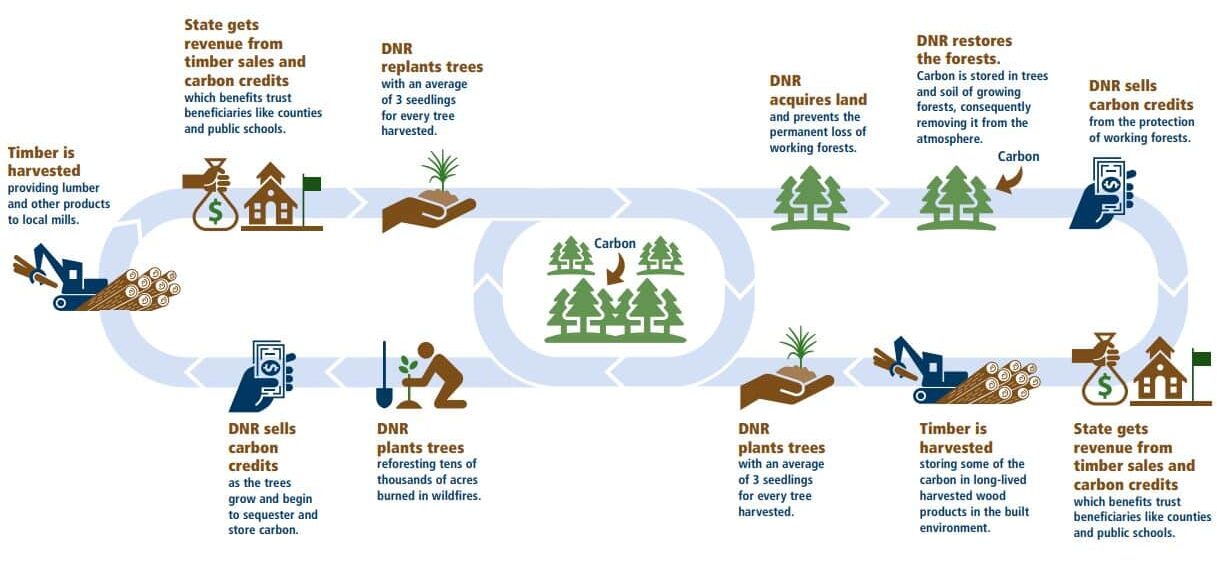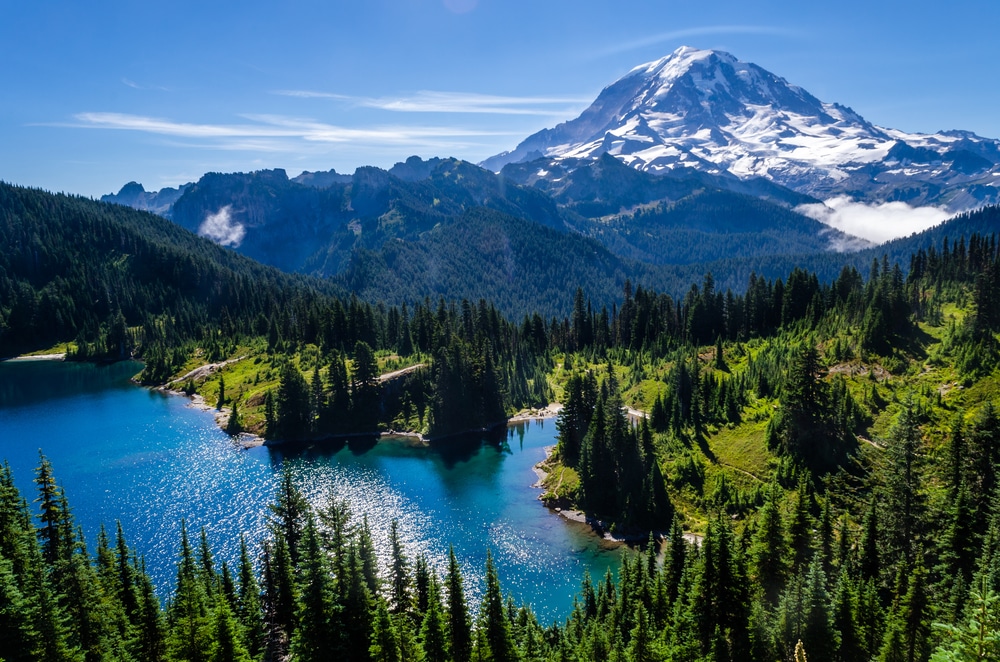Washington State’s Department of Natural Resources has proposed using carbon credits to support local projects with the HB 1789 (Carbon Bill). This will allow the Department of Natural Resources (DNR) to generate and sell carbon credits from forest land in Washington.
Main Objectives of the Bill
The main objective is for Washington state to attain the same benefits from the carbon credit market as private businesses. The DNR could use various ecosystem services to produce carbon credits. The contract terms could cover a period of 125 years for these projects.
The carbon credits generated in Washington could be used for Washington’s cap-and-invest program. The cap-and-invest program is part of Washington’s Climate Commitment Act (CCA).
The CCA will use the program to target the state’s biggest emitters of greenhouse gasses (GHGs). The goal is for Washington to reduce GHGs by 95% by 2050.
It sets an emissions cap, which is then continuously reduced with time. A similar market-based program exists in California.
The sale of these carbon credits would allow the state to support trust beneficiaries such as public schools and counties. They could also fund projects like restoring damaged forests and protecting salmon habitats. These activities would boost the local economy and protect the environment.
How Washington’s Carbon Bill Would Work

The DNR will restore land that has been damaged by wildfires by replanting trees. These areas will generate carbon credits as the trees grow and sequester carbon. Some of the trees will be used for timber, serving the local wood products industry.
Washington state will receive revenue for both the carbon credits and the sale of timber. However, the DNR will replant the trees that were harvested for timber. On average, they will plant three seedlings for every tree that is felled.
The ultimate objective is to increase working forestland in Washington. The sale of the carbon credits would provide extra funding to restore damaged forests that would otherwise not be restored. It would also support the local timber industry since the amount of working forestland would expand due to forest restoration.
Washington state has already seen a loss of 400,000 acres of working forestland in recent decades. In the next 20 years, it is expected to see another loss of 600,000 acres of forestland. Currently, the DNR has to apply for grants and limited external funding to support these restoration projects.
The bill also highlights that the projects would have 125-year contract durations. This is to adhere to the compliance requirements in the Washington carbon market. It states that projects monitor, report, and verify carbon stocks for at least 100 years following the last credit issuance.
This means that the DNR can maintain the forests and carry out harvesting and replanting for 100 years. However, the carbon storage in that time period should exceed the level it would have been without the project.
-
The bill also allows the DNR to use the sale of carbon credits to fund non-forestry related projects.
Some proposals include restoring eelgrass meadows, kelp forests, and investing in biochar.
Similar projects have already been carried out by the DNR in other states. For example, in Michigan, The Big Wild Forest Carbon Project started in 2020 and was completed in 2022. It covers over 100,000 acres of the Pigeon River Country State Forest known as “The Big Wild.”
The project creates a variety of revenue streams through carbon credits from its forest management activities. With a total project term of 40 years, energy company DTE Energy purchased the first decade of carbon credits.
Although carbon projects can provide extra income for states to fund social and environmental welfare projects, there are some risks involved.
For example, the projects would need to account for sudden events such as wildfires, droughts, and diseases that can damage trees.
These things will reduce carbon sequestration, and hence generate fewer carbon credits.
California, for example, has set up a carbon buffer pool to deal with these risks. These are a pool of carbon credits that cannot be sold or traded and set aside for sudden events.
Revisions to the Carbon Bill
The House Agriculture and Natural Resources Committee endorsed the idea of the DNR selling carbon offsets in a bipartisan 7-4 vote. This means the DNR could contract ecosystem services for a duration of 125 years.
However, there were some objections by the wood products industry to parts of the bill. Hence, the committee had to make some revisions.
- The changes would prevent the DNR from reducing planned timber harvests. It also cannot lease less land for agriculture.
According to its president, The American Forest Resource Council still does not support the bill. Wood industry representatives also find the bill’s language too broad. They want to be more specific about which activities will fall under ‘ecosystem services’.
The opposition from the timber industry could stem from developments from last year. The DNR revealed plans to reduce logging activities and generate carbon offsets. The plans were to lease 10,000 acres of timberland in Western Washington to a private business.

